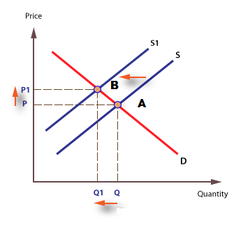

As has been the case with the 2700 page, 4,500 provision document, the Affordable Care Act is anything but affordable and is the poster child for false advertising.
|
To make matters worse, a number of hospitals are merging or being acquired by other hospitals which further reduces competition and increases costs. This according to Forbes magazine is a function, in part, of Obamacare (the Affordable Care Act) which encourages hospitals to merge, thereby giving hospitals even more market power to charge even higher prices. A study by Jamie Robinson of the University of California found that highly concentrated hospital markets–where one or two hospitals controlled most of the patient volume—hospitals charged an average of 41 percent more for common procedures than they did in more competitive markets (charts below).  Imagine owning a business in an industry where competition is limited by legal mandate. Wait, lets go a step further; imagine owning a business in an industry where competition is not only limited, but you get to have a significant say in weather a competing company can enter or not. No such industry you say, only in fantasy land. Hardly, the industry is healthcare, specifically hospitals. As you can see from the chart at the left, Hospital costs represent the largest slice of the pie in regards to healthcare costs. This is in part due to state and federal legislation that not only limits the number of hospitals in a particular geographic area, but limits your choice in health insurance plans that you can purchase. If you want to build and operate a hospital, you must first obtain a Certificate of Need. What this is originates from a 1974 federal Act required all 50 states to have a structures involving the submission of proposals and obtaining approval from a state health planning agency before beginning any major capital projects such as a new hospital, building expansions and/or ordering new high-tech devices. This also allows existing hospitals to send representatives to the hearings, and as you can imagine, they rarely speak in favor of more competition. This in return, reduces services, and increases costs. The average wait in a hospital emergency room is 4 hours and if you've been to an ER lately, you know that there is a huge deductible and cost is 3-4 times higher as opposed to a Physician's visit. This has been alleviated somewhat by the emergence of Urgent Care centers.  There are very few area's where all economists agree. One of those area's is supply and demand. However, when it comes to healthcare, you can, for the most part, throw the laws of supply and demand out the window. This is an industry where the supplier (the doctor), tells the consumer (the patient) what goods and services to buy, and the consumer does it without question (for the most part) or shopping around for price, Why, because someone else is paying for it, generally insurers or the taxpayer. There is however one notable exception where supply and demand does apply, and that's when it comes to industry competition. As a result of Certificate of Need requirements, this limits competition in the industry. As you can see from the above chart, this has the effect of shifting the supply curve to the left. Equilibrium now moves from point A to B, and at B you have higher prices (costs) and diminished quantity supplied; hence, the longer wait for emergency services (i.e., the 4 hour wait in an ER room, an ambulance ride that costs over $2000 and ICU rooms that are in excess of $5000/day. What has also occurred is an increase in hospital mergers and acquisitions which also reduces competition and further increases costs. According to Forbes, Obamacare (the Affordable Care Act), encourages hospitals to merge, thereby giving hospitals even more market power to charge even higher prices. A study by Jamie Robinson of the University of California found that highly concentrated hospital markets–where one or two hospitals controlled most of the patient volume—hospitals charged an average of 41 percent more for common procedures than they did in more competitive markets (charts below). What Obamacare does is it "creates a government program, called Accountable Care Organizations, whose explicit goal is to encourage hospitals to consolidate the provider industry, thereby giving them more leverage to charge higher prices. In 2011, a Federal Trade Commissioner called attention to this problem, noting that “the net result” of ACOs “may therefore be higher costs and lower quality health care.” (Forbes) As has been the case with the 2700 page, 4,500 provision document, the Affordable Care Act is anything but affordable and is the poster child for false advertising. What is the solution to higher health care costs. In my opinion, the following; eliminate Obamacare (tho there are some stipulations I like such as children being able to be carried on their parents insurance until age 26 and not denying coverage for a pre-existing condition), allow interstate insurance competition, tort reform that limits the amount of a lawsuit, eliminate the requirement for a hospital to obtain a certificate of need, disallow advertising for prescription drugs (this has been allowed by the FDA since 2000 and immediately increased the cost of meds by 33%, require healthcare providers to publish their rates for various procedures, and maybe, just maybe price controls (a 15 minute ambulance ride shouldn't cost more than $2000).
0 Comments
Leave a Reply. |
AuthorJohn Tommasi is a retired Senior Lecturer of Economics & Finance from Bentley University and the University of New Hampshire. Archives
February 2023
Categories |